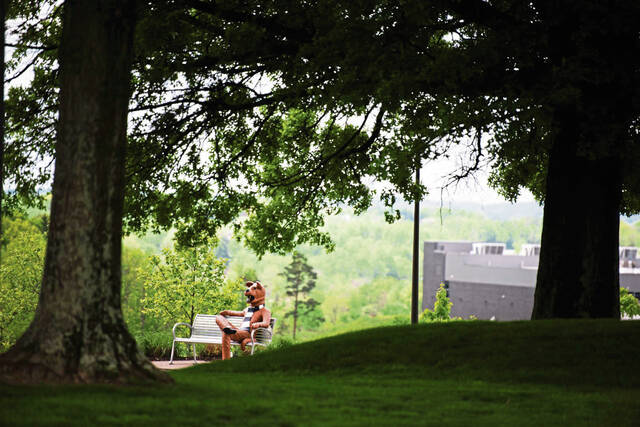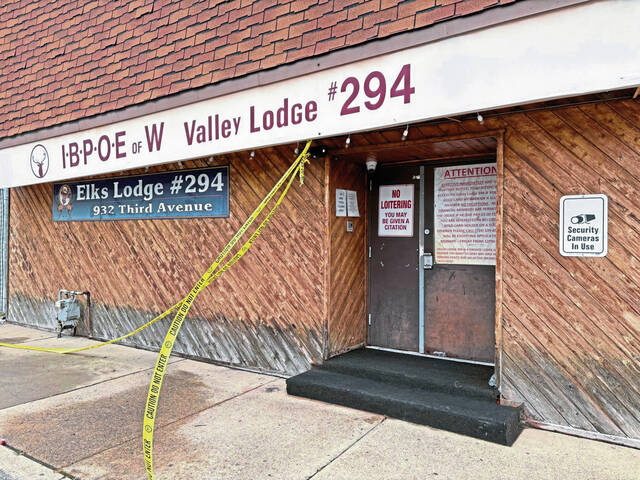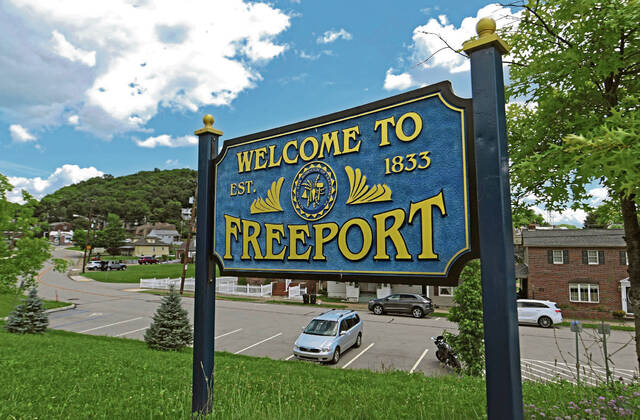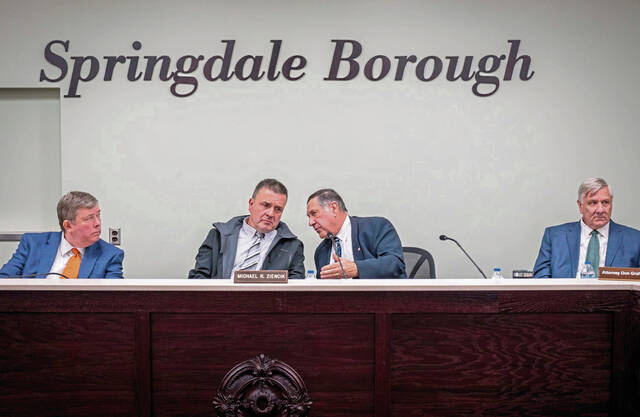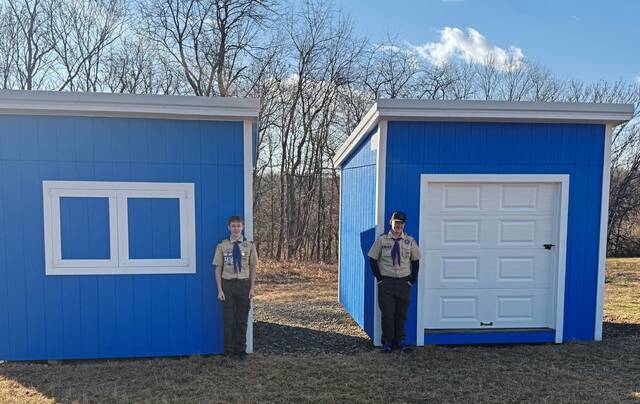Decades ago, the good times rolled at Penn State.
In the 1990s, the state’s flagship was one of the most popular institutions nationwide, claiming to receive more SAT scores from high-school seniors than any other college, according to reports at the time.
Pennsylvania was expecting its college-going population to swell, and in 1997, Penn State expanded its bachelor’s degree programs at the Commonwealth Campuses, which numbered 19 total statewide. The Commonwealth Campus ecosystem reached its peak enrollment between 2006 and 2010, according to the university.
So how did Penn State get into the position to close seven of its branch campuses — including New Kensington and Fayette — last week?
“We did not arrive here overnight,” University President Neeli Bendapudi said in a livestream Thursday night, after the board of trustees voted 25-8 to close those two Southwestern Pennsylvania campuses, as well as DuBois, Mont Alto, Shenango, Wilkes-Barre and York.
“Our campuses were built to serve a Pennsylvania that looked very different than it does today. These were built during the Great Depression, before the Internet, before online education, before transportation advances or, of course, most importantly, the demographic decline.”
Trustees who voted to close the campuses stated that, although difficult, it was necessary. Trustee Mary Lee Schneider said Thursday that statistics surrounding the Commonwealth Campuses have been an issue since she joined the board a decade ago.
Penn State “can’t ignore these trends anymore,” she said.
“The only challenge I have is, I think we should go deeper on the closures, as I fear we will be back here discussing the same facts and circumstances in a few years,” Schneider said.
According to Penn State, closing those seven campuses will save around $50 million annually, and clear out about $200 million in maintenance backlogs at the campuses.
The seven campuses slated for closure all lost money last year, say university officials, and have seen their enrollments decline. Together, the campuses enroll 3.6% of Penn State’s students, and employ 3.4% of its faculty and 2.2% of its staff.
Pennsylvania ranks 4th in the country for its number of colleges and universities, which will all be vying for a shrinking population pool: Birth rates nationally have been declining since 2008.
Bendapudi told trustees the steep decline will set up a challenging decades to come in higher education.
Over the past decade, Penn State administrators say, the university has invested $327 million in 12 Commonwealth Campuses.
“We’ve tried new recruitment strategies, adding new academic programs and expanding athletic offerings, advocating for funding, enrollment management,” Bendapudi said. “But the financial strain, the shrinking population and, candidly, changing student needs, mean that some regions demand a new model.”
Opponents to closure, including some trustees, argued the recommendation was rushed and flawed.
They say the Commonwealth Campuses are educational and economic drivers in the areas they serve, providing a quality education to students of diverse backgrounds that they otherwise might not be able to receive.
Experts say the Commonwealth Campus closures are a victim of a competitive higher education landscape in Pennsylvania with no oversight or governing body to regulate the various colleges.
One example is when Penn State expanded 14 of its Commonwealth Campuses in 1997.
The ambitious plan, at first, paid off: It served a growing number of students who wanted a Penn State education but, for various reasons, couldn’t attend the main campus. The university’s coffers grew, enrollment balanced at the University Park main campus and increased at the branch campuses, said Andrew Koricich, executive director of the Alliance for Research on Regional Campuses.
“It got what they wanted,” he said, “but now, they have to make these choices because they may have overbuilt it.”
Higher education changed drastically over the past three decades: from the Great Recession of 2007 to 2009, the covid-19 pandemic, a decline in birth rates and an increase of digital and online learning, Koricich said.
Even when the expansion was announced 28 years ago, experts feared other colleges would spend unsustainably to attract other students, over an excessive supply of college programs.
“As a result, you have this hyper-competitive environment of four-year campuses, with Pitt, Penn State and PASSHE (state system colleges),” Koricich said. “We’ve seen what that has done with changes to the PASSHE system years ago,” he said, referencing consolidations of some of its colleges.
Critics of the proposed closures say Penn State should innovate at those campuses to keep them sustainable in the communities they serve. That innovation, to Koricich, could include Penn State recognizing there can be value with 2-year institutions, or offerings focused on technical training or workforce development.
In Penn State’s recommendation to close New Kensington, for example, it argues the college has “redundant” programming compared to the 15 colleges within 30 miles of it, and 27 colleges within 50 miles of it.
“There’s a ton of overlap in programming,” said Julie Wollman, a professor at the University of Pennsylvania’s Graduate School of Education. “If you had a coordinating body, where they said, ‘No, you can’t do that’ — whether they’re a community college, state university or flagship — ‘You can’t start that program because it’ll compete with other schools,’ that kind of oversight doesn’t happen.”
Wollman predicts the University of Pittsburgh and its branch campuses in Bradford, Greensburg, Johnstown and Titusville might face the same realities as Penn State, if they aren’t already.
“They are also in parts of the state where the population has been declining,” she said.
She also referenced the Erie region — with Penn State Behrend, private Gannon University and the state system’s PennWest Edinboro — as an example with three schools with similar programming competing over the same pool of students.
“They offer a lot of similar programs because they are programs students want,” Wollman said. “So if you want enrollment, you offer those programs.”
But innovative programming, no matter how hard schools try, can’t solve population cliffs, she said.
“It’s like creating a product — which is a brilliant, new product — but there’s no one to buy it,” she said.
Nathan Grawe, an economics professor at Carleton College in Minnesota, is the author of “Demographics and the Demand for Higher Education.” He said it’s difficult to say whether Penn State moving its branch campuses to offer 4-year degrees made Thursday’s decision inevitable.
If the campuses didn’t expand, he said, people would ask how Penn State is meeting the needs of its in-state students and students flocking to Pennsylvania to get a Penn State education.
“It was pretty clear they were pursuing the needs to educate (in-state) students,” Grawe said. “We can understand why today, with the declining numbers of high school students, we have excess capacity. But that doesn’t mean that we were already exceeding capacity when the expansion occurred.”
Wollman said one could argue that expanding the Commonwealth Campuses in the 1990s was a factor in some of their demises. But she noted that, at the time, Penn State was looking at the increasing number of prospective students in the state.
Those prospective numbers are cyclical, Wollman said, and higher education has never done a good job of looking at long-term sustainable plans.
She referenced the fracking boon near the Mansfield area about a decade ago. But in 2022 Mansfield University merged with Bloomsburg and Lock Haven universities to create the Commonwealth University of Pennsylvania, within the PASSHE system.
“It’s very difficult for leaders to do that,” Wollman said. “They want to take advantage of the immediate opportunities.”
Commonwealth Campus closures will be hard for communities, especially in rural places, Koricich said.
“There’s a real threat of losing some of the highest paying jobs, and how that trickles down into businesses losing revenues, school districts losing funding because their property tax base is shrinking,” he said.
Koricich predicts Penn State’s reputation will be damaged in some of those communities.
“It’s one of those things where, in rural areas, how can you not feel abandoned when the state flagship is closing your campus?”


